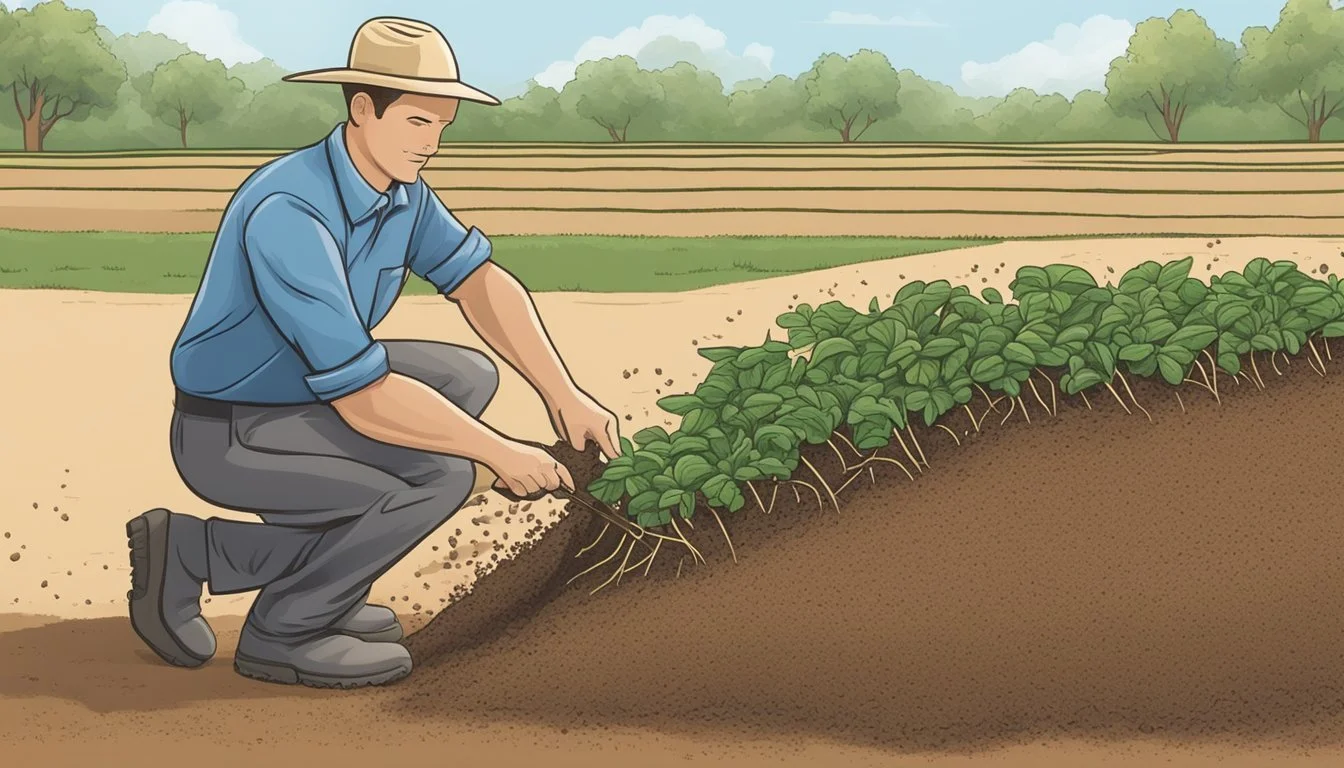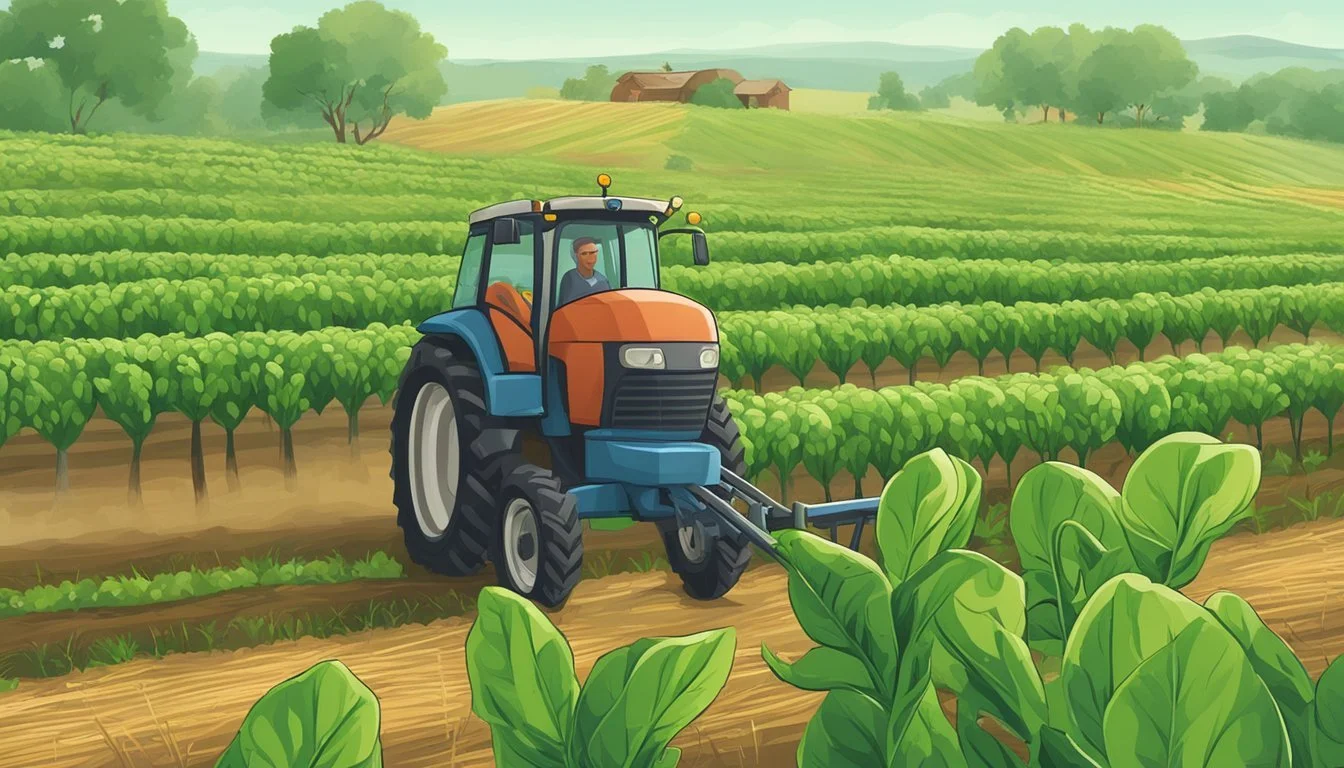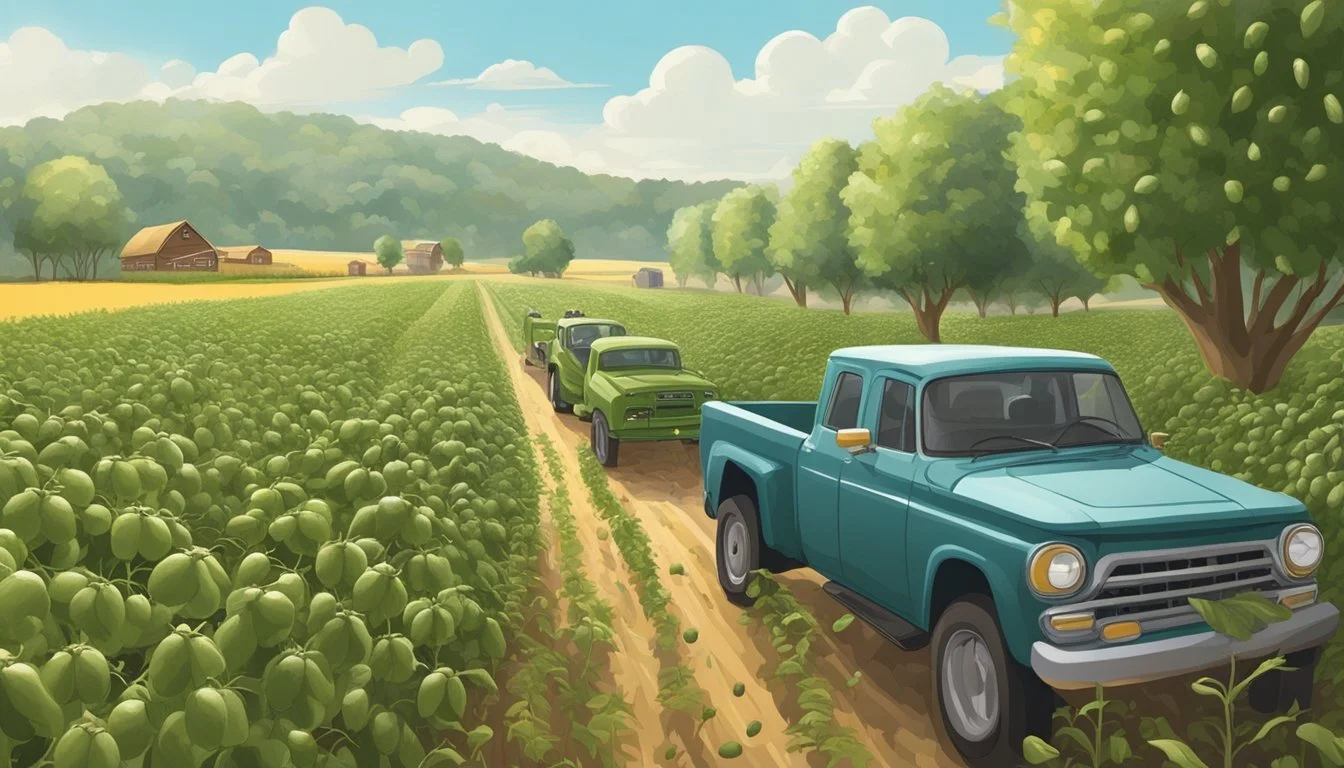Protecting Crops from Billbugs
Effective Strategies for Pest Management
Billbugs pose a significant threat to various cereal and forage crops, including corn, one of the most widely cultivated grains globally. These pests are especially known for their lifecycle, which includes both adult and larval stages capable of inflicting damage on plants. Larvae often cut the underground portions of crops, affecting their ability to absorb nutrients and water, while adults can damage young corn plants. Effective management of billbugs is crucial for maintaining healthy crops and optimizing yields.
Management practices for billbugs in corn fields typically involve an integrative approach that combines vigilant scouting with preventative strategies. It is advised to monitor these pests from corn emergence through the 6- to 8-leaf stage, especially in high-risk areas known for previous billbug infestations or where yellow nutsedge is present. Understanding the behavior and lifecycle of billbugs enables farmers to implement timely measures to mitigate the potential impact, ensuring the sustainability and productivity of their crop systems.
Understanding Billbugs in Turfgrass
Billbugs are snout weevils notorious for damaging turfgrass. Their life cycle and behavior make them a resilient turfgrass pest that requires precise identification and understanding of infestation signs for effective management.
Biology and Life Cycle of Billbugs
Billbugs go through a complete metamorphosis that includes the stages of egg, larva, pupa, and adult. The adults are capable of overwintering in soil or leaf debris, emerging in the spring to lay eggs. Sphenophorus species, commonly known as billbugs, typically have one generation per year. The larvae, which cause the most harm, feed on grass stems and can be found from late spring through summer as they grow and eventually pupate in the soil.
Identifying Billbug Species
There are several species of billbugs that affect turfgrass, but they share common characteristics. Adults have a distinctive snout, and larvae are legless and C-shaped. The bluegrass billbug and others in the genus Sphenophorus are identified by their weevil-like appearance. It is crucial to identify the correct species as management strategies can vary.
Signs of Billbug Infestations
An infestation is often indicated by irregular patches of brown, dying turfgrass. Upon closer inspection, one may find a mixture of adult billbugs and larvae. Overwintering adults begin feeding on grass stems, while the larvae feed higher up on the roots than other pests like white grubs. Telltale signs include fine, whitish, sawdust-like excrement known as frass on the soil surface.
Diagnosing Billbug Damage
Accurate diagnosis of billbug damage is essential to protecting turfgrass. This involves recognizing specific patterns of harm the pests inflict on lawns which may often be confused with other issues affecting turfgrass health.
Evaluating Turfgrass Symptoms
When billbugs attack, they leave distinct signs on the turf. The turf may appear unevenly discolored, resembling drought stress, but closer inspection is necessary. An important distinctive symptom is the irregular patches of brown grass, which may seem similar to disease or nutrient deficiencies. These areas are where the adult billbugs have laid their eggs, and the larvae have begun to feast on the grass. Fertilize affected areas properly to promote grass health, reducing the likelihood of severe damage by strengthening the root system and improving its resilience against pests.
Investigating Root and Stem Damage
To investigate root and stem damage, one should perform a 'tug test' by pulling on affected grass plants. If the grass comes up easily with little resistance, this may indicate larval presence, as billbug larvae tend to feed on roots, causing them to become weak. Additionally, look for hollowed-out grass stems filled with a sawdust-like material, known as "frass," which is insect excrement. This is a clear sign of billbug larvae activity. One should note that billbug damage can be superficially similar to that caused by white grubs, but billbug larvae are generally found higher up in the plant tissue and thatch area. Identifying the correct pest is crucial, as management strategies for billbugs and white grubs differ, particularly in the choice of pesticides for treatment.
Preventive Strategies Against Billbugs
Effective management of billbugs in turfgrass involves integrating cultural practices and the use of resistant turfgrass varieties. These preventative strategies are essential for maintaining healthy lawns and minimizing billbug damage.
Cultural Practices for Billbug Management
Implementing robust cultural practices is foundational in preventing billbug infestations. Maintaining an appropriate level of moisture through regulated irrigation practices can discourage billbug colonization. Lawns should be watered deeply but infrequently, promoting strong root growth which is less susceptible to billbug damage.
Fertility management is another critical aspect. Apply fertilizers based on soil test recommendations to avoid the excessive growth that can attract billbugs. Furthermore, a routine rotation of different maintenance activities, such as mowing and dethatching, can disrupt the billbug lifecycle and reduce population build-up.
Irrigation: Deep, infrequent watering
Fertility: Soil test-based fertilization
Maintenance Rotation: Varied lawn activities
Selecting Resistant Turfgrass Varieties
Choosing the right resistant varieties of turfgrass is a proactive measure to reduce billbug problems. Some turfgrasses possess natural resistance to billbugs, which can significantly lower the severity of infestations. Research on the specific turfgrass species suitable for the region and their resistance to billbugs is highly advisable.
For instance, endophyte-enhanced grass varieties can provide a degree of resistance to billbugs. These grasses contain a fungal endophyte that produces compounds detrimental to certain pests but is safe for the environment.
Endophyte-Enhanced Grass: Natural pest resistance
Specialized Selection: Choose species suited to specific regions
Monitoring and Detection Techniques
Proper monitoring and detection are crucial in managing billbugs effectively. These techniques help to identify billbug infestations early, which is essential for protecting lawns and turfgrass.
Scouting for Adult and Larval Billbugs
To identify billbug presence, one should regularly inspect the grass stems and soil. Scouting involves looking for adult billbugs that often become most visible during the evening when they climb on top of turfgrass to feed and mate. Larval billbugs, which live within the soil or inside grass stems, can be harder to spot. Regularly checking the condition of the turf can give an indication of their presence, as damaged grass will often appear yellowed and easily pulled up, with hollow inside the stem where the larva has fed.
Using Traps and Other Monitoring Tools
In addition to scouting, using traps is a common technique for monitoring billbug populations. There are various types of traps, such as pitfall traps, which can be placed around a lawn to capture adult billbugs as they move across the turf. These can provide an indication of the level of infestation and the necessary threshold at which to act. Soil sampling also serves as a monitoring tool, where soil cores are taken and inspected for the presence of billbug larvae. Using these monitoring tools enables early detection, which is key to preventing significant damage to turfgrass.
Biological and Natural Control Methods
Implementing biological and natural control methods can effectively reduce billbug populations in crops without relying on chemical pesticides. These strategies harness natural enemies and ecological agents to combat these turf-destroying pests.
Introducing Beneficial Nematodes
Steinernema carpocapsae and Heterorhabditis bacteriophora are beneficial nematodes that act as natural biocontrol agents against billbugs. Deploying these nematodes into the soil targets the billbug larvae, providing a preventive approach:
Nematode Application: Apply during cool, moist conditions to allow nematodes to seek out and infect billbug larvae.
Effective Strains: Utilize S. carpocapsae for immediate larvae elimination, while H. bacteriophora offers deeper soil penetration to target billbugs more effectively.
Exploiting Natural Predators and Pathogens
Beneficial predators and pathogens play a crucial role in naturally controlling billbug populations. Strategies involve increasing the presence of fungi and predatory insects that target both adult and larval stages:
Fungi: Certain species like Beauveria bassiana infect and kill billbugs, reducing the need for chemical treatments.
Predatory Insects: Encourage populations of ground beetles and rove beetles which are known to prey on billbug larvae and help suppress their numbers.
Chemical Control Options
Effective management of billbugs in crops can often require the use of chemical control options. It is crucial to select the right type of insecticide and understand the active ingredients that are effective against billbugs to ensure successful control.
Selective Insecticide Application
Selective application of insecticides is vital for managing billbug infestations while minimizing environmental impact. Insecticides should be applied prior to egg hatch for optimal effectiveness. For example, products containing imidacloprid, an active ingredient with systemic action, can be applied as the ground warms in spring to target the feeding larvae. This precise timing disrupts the lifecycle of billbugs, preventing damage to crops before it begins.
Understanding Effective Active Ingredients
Identifying the right active ingredients in insecticides is critical for billbug control. Pesticides like chlorantraniliprole are highly effective due to their specific action on the pest's muscle receptors, which makes them a valuable tool in the chemical control arsenal. Other noteworthy active substances include clothianidin, cyfluthrin, bifenthrin, and thiamethoxam. These compounds vary in their mode of action—some disrupting the nervous system, while others act more selectively.
Imidacloprid: A neonicotinoid offering extensive residual control.
Chlorantraniliprole: A ryanoine receptor modulator providing long-term protection.
Clothianidin: Another neonicotinoid tailored for robust systemic use.
Cyfluthrin: A pyrethroid insecticide for immediate knockdown effects.
Bifenthrin: A broad-spectrum pyrethroid that targets a variety of pests.
Thiamethoxam: An effective systemic insecticide with translaminar properties.
Utilizing these chemical tools wisely will contribute to a comprehensive pest management strategy.
Billbug Control in Different Grass Types
Billbug infestations can lead to significant damage to turfgrass, with varying levels of susceptibility among different grass types. Effective control strategies are tailored to the specific needs of cool-season and warm-season grasses.
Managing Billbugs in Cool-Season Turf
Cool-season grasses such as Kentucky bluegrass, perennial ryegrass, and certain types of fescue are often targeted by billbugs, particularly the bluegrass billbug. It is crucial to implement a preventive management strategy during the adults' active period, often in late spring or early summer. Applying chemical or biological insecticides can be effective to prevent the larvae from developing and causing harm. Early detection and curative measures include inspecting grass stems for larvae.
Preventive Measures:
Monitor adult billbug activity in late spring.
Apply insecticides before larvae hatch.
Early Curative Strategies:
Check stems for larvae presence.
Apply targeted treatments to infested areas.
Challenges with Warm-Season Grasses
Warm-season grasses like bermudagrass, zoysiagrass, and certain fescue varieties have different challenges when it comes to billbug control. These grasses become active and grow during the warmer months when billbugs are most active, which can sometimes mask the signs of billbug damage. However, it doesn't mean they are resistant to billbug infestations. Regular monitoring and timely intervention are critical for these grass types to prevent billbugs from causing extensive damage.
Regular Monitoring:
Inspect for signs of billbugs during the grass's active growth period.
Look for hollowed-out stems and sawdust-like frass.
Timely Intervention:
Implement irrigation control to promote healthy grass.
Encourage natural predators like birds.
Repairing and Recovering from Billbug Damage
After identifying billbug damage, it is essential to initiate repair and recovery efforts promptly to restore the health and appearance of the affected lawns.
Renovating Affected Lawns
To renovate a lawn that has been damaged by billbugs, one must first alleviate the issues caused by their presence. This often includes removing dead turf and preparing the soil for reseeding. It's critical to select resistant grass varieties that are less vulnerable to future billbug attacks. The Managing Billbugs in Turfgrass - Purdue University gives insights into suitable turfgrass management practices. Reseeding should take place during the growing season to ensure the best establishment of the new grass.
Enhancing Lawn Recovery with Proper Care
Recovery of a lawn is expedited by implementing proper care routines. This includes timely irrigation to ensure the new grass has adequate water to establish deep root systems, which can be crucial during periods of drought, as noted by Penn State Extension. Fertilizing the soil will provide necessary nutrients to aid in the quick establishment and health of the new turf. Effective lawn care after dealing with billbugs involves ongoing monitoring and maintenance to prevent future infestations and to ensure a full recovery.
Advanced Topics in Billbug Management
Billbug management is an evolving field, incorporating new pest control strategies and considering the effects of environmental changes. As these pests affect crop distribution and have a significant environmental impact in the United States, it is critical for growers to stay informed on the latest advancements in management practices.
Emerging Trends in Pest Control
Biological Control: Recent years have witnessed a surge in leveraging natural predators as a means to control billbug populations. For instance, certain nematode species have been identified as effective against billbug larvae when applied to the soil, minimizing the need for chemical insecticides.
Chemical Advances: Insecticide development is moving towards products that are more targeted and environmentally friendly. Growers now have access to chemistries that offer protection against billbugs while presenting a reduced risk to non-target organisms.
Impact of Environmental Changes on Billbug Behavior
Climatic Factors: Climate change is altering billbug distribution patterns, with increasing temperatures enabling their expansion into previously unsuitable areas. Such shifts necessitate a dynamic approach to pest management, adjusting strategies based on regional climatic trends.
Agricultural Practices: Agricultural practices, including crop rotation with non-grass crops, can significantly mitigate billbug infestations. Sound environmental management tactics not only deter billbug populations but also contribute to the overall ecosystem health.
Frequently Asked Questions
Billbugs pose a significant threat to crops, and arming oneself with knowledge about their management is crucial. The following frequently asked questions address practical steps and methods for early detection, effective treatments, and cultural practices to reduce billbug damage.
What are the preferred methods for early detection of billbug infestations?
Early detection of billbugs can be accomplished through regular monitoring of lawns and turfgrass. Indicators of an infestation include small patches of yellow or brown grass and the presence of sawdust-like frass. For detailed guidance, consulting a resource such as Purdue University's Extension service may provide additional insights.
Which insecticides are proven to be effective against billbugs in turfgrass?
Various insecticides have been shown to be effective against billbugs, but their use depends on the timing and severity of the infestation. Products containing imidacloprid or chlorantraniliprole are often recommended. As treatment plans might vary, a professional service like Orkin can design tailored solutions.
Can biological control be used to combat billbug populations, and if so, which agents are recommended?
Biological control agents, such as parasitic wasps and pathogenic nematodes, can target billbug larvae effectively. Nematodes like Heterorhabditis bacteriophora have been used with success in certain scenarios. For a deeper understanding, resources from Penn State Extension offer further information on biological control strategies.
What cultural practices can help reduce the impact of billbugs on crops?
Maintaining a healthy lawn through proper fertilization, irrigation, and mowing can reduce the impact of billbugs. Ensuring that turf is not moisture-stressed and is mowed at a proper height helps to promote a strong lawn less susceptible to pest infestation. More cultural practices are detailed by experts at Penn State Extension.
How does lawn maintenance affect billbug activity and management?
Regular lawn maintenance influences the habitat and feeding grounds for billbugs. A well-kept lawn can discourage billbug activity by reducing the thatch layer where larvae develop. Information on proper maintenance techniques to deter billbugs can be found through comprehensive guides.
Are there any resistant plant varieties that can help deter billbug damage?
While the development and use of resistant turfgrass varieties are ongoing, options do exist that show less vulnerability to billbug damage. Selecting the right type of grass, such as endophyte-enhanced varieties, can play a role in reducing the appeal of turf to billbugs. The choice of grass species and their resistant characteristics should be made after consulting with local extension services or turf specialists.







